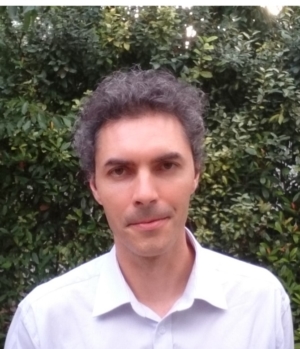 Sébastien Moncorps is the Director of the IUCN French Committee. He answers questions from the Tour du Valat concerning Nature-based Solutions.
Sébastien Moncorps is the Director of the IUCN French Committee. He answers questions from the Tour du Valat concerning Nature-based Solutions.
- The IUCN French Committee has been working to promote Nature-based Solutions since 2015. How are these solutions innovative?
Nature-based Solutions (NbS) are innovative because they make it possible to link biodiversity conservation issues with other major challenges facing our societies, such as the fight against climate change, natural risk management, health and water supply issues, and food security. By taking action to protect, sustainably manage, and restore ecosystems, which are the three main types of NbS, we can in fact directly address one or more of these societal challenges in an effective and adaptive manner, while at the same time providing benefits for biodiversity. This was our main message in the run-up to the COP21 in Paris in 2015: we must work with nature to meet the challenges of climate change. Ecosystems play a fundamental role in carbon sequestration because they are major natural reservoirs of carbon, both on land and at sea. However, their degradation now accounts for a significant share of greenhouse gas emissions worldwide (12% for deforestation). Therefore, by protecting them, we are providing an effective solution to fight against climate change and preserve biodiversity. In addition, when we restore degraded ecosystems, we increase carbon capture and storage capacities. An international scientific study has estimated that 37% of the mitigation efforts needed to meet the 2-degree objective of the Paris Climate Agreement by 2030 can be achieved through Nature-based Solutions.
- Faced with the growing challenges confronting our societies, decision-makers and land-use planners still make extensive use of traditional, technology-based approaches. What arguments could convince them of the relevance of Nature-based Solutions?
The main arguments to be put forward are their effectiveness, how they can adapt over time, the benefits they bring for biodiversity and responses to other issues, and finally their cost/benefit ratio. For example, to reduce natural risks, which are increasing in intensity and frequency as a result of climate change, many development solutions based on civil engineering contribute to the artificialisation of natural environments, are less and less effective, and sometimes even simply postpone or aggravate the problem elsewhere. This is the case, for example, of the diking of rivers to combat flooding or the dikes built to combat coastal erosion. Solutions must be found first and foremost that collaborate with and not against nature.
The IUCN French Committee has produced a compilation of experiences which show that many NbS projects in France are bringing concrete results through the restoration of wetlands and coastal dunes. Since these are projects that take place over time —unlike permanent constructions—, they can be adapted to changing conditions and bring benefits for biodiversity and the local territory, particularly for tourism, leisure, and other activities. By studying data in Aquitaine, we found that the cost of a breakwater is about €4 to 6,000 per linear metre (lm), and then about €200 /lm/year for its maintenance, whereas the cost of managing a dune is about €5 /lm/year. That is why we say to the decision-makers: “have the ‘nature’ first reflex when you try to identify natural risk management solutions.”
- Can you tell me about the NbS initiatives related to water and wetlands identified by the IUCN French Committee that you find the most relevant or inspiring?
In our latest publication on NbS and water-related risks [1], we identified 21 projects that correspond to the IUCN’s international definition and which we have analysed. Three in particular caught our attention. The first is a project to reconnect flood expansion zones in the Thérain Valley in the Oise department, which during the winter floods of 2018 enabled 500,000m3 of water to be stored in restored wetlands, thus avoiding any damage. The second is a project to restore the Allaine River in Franche-Comté, which will make it possible to manage the intensity of a 100-year flood instead of a 30-year flood, while restoring the functioning of a biodiversity-rich wet meadow. The third is a project to remove the permanent water bodies of the Bièvre, a tributary of the Seine in the Ile-de-France region, which has made it possible to reconnect the river with its adjacent wetlands, resulting in a 30% increase in the volume of water storage, and thus reducing the risk of flooding for local populations at a very low cost (less than €20,000).
We are also following with great attention the restoration project of the former Camargue saltworks that the Tour du Valat is carrying out with its partners. The IUCN French Committee will soon be publishing a new compilation of NbS experiences and coastal risks. In this way, we wish to continue inspiring future project backers and decision-makers to make more widespread use of NbS in their local territories and to continue demonstrating that preserved and diversified ecosystems are our allies in the fight against climate change and for natural risk management.
